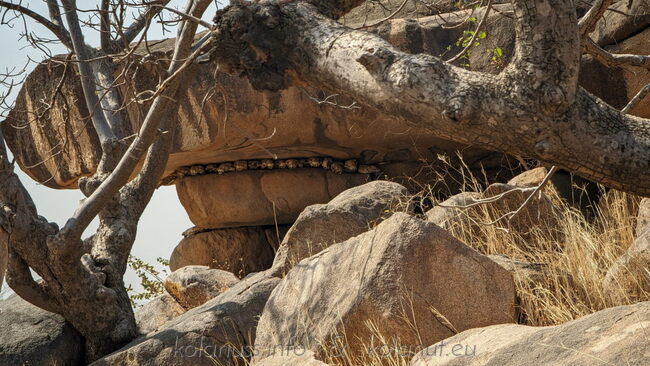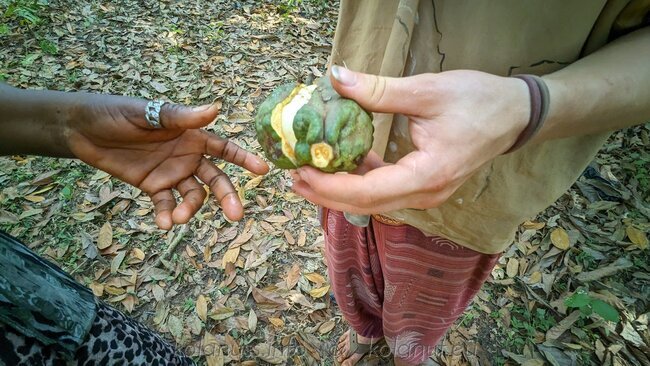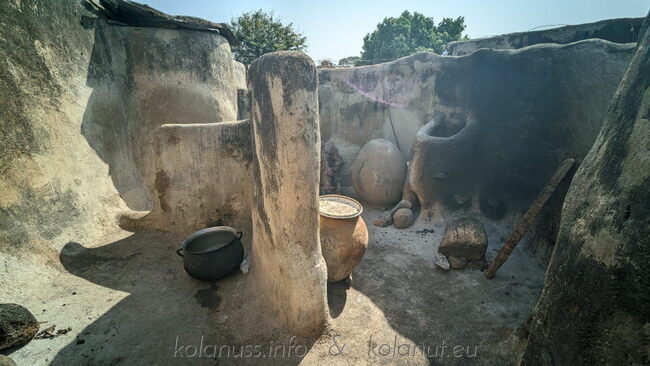History & Culture

The cola nut, thanks to the caffeine it contains, has been chewed fresh by the inhabitants of West Africa in their rites, ceremonies, and daily life since ancient times. The diverse cultural meanings include its use as a gift or symbol of hospitality and connection, comparable to other practices involving economically and/or culturally important plants. Examples include mate tea from South America or tobacco in a peace pipe.
- Details

For ages, the kola nut has been chewed fresh by the inhabitants of West Africa during their rites, ceremonies, and in everyday life. Its diverse cultural significances include serving as a gift or symbol of hospitality and connection, comparable to other practices involving economically and/or culturally important plants. Examples include the mate tea from South America or the smoking of a peace pipe.
In Ghana, for instance, chopped kola nuts are mixed with ginger and consumed as a meal during death vigils when a close relative passes away.
The fresh or slightly dried ("cured") kola nuts are sold in markets, thus playing an economic role. Nigeria, the world's leading exporter of kola nuts, was able to produce 188,700 tons of kola nuts in 2023 (FAO statistics).
Additionally, the kola nut was also used as a means of payment. The first written records date back to 1591 from the chronicler of the Portuguese circumnavigator Ferdinand Magellan, from his essay "On the Kingdom of Kongo." With slave traders, young plants reached South America and other tropical regions, where they continued to be cultivated. In 1886, the world-famous refreshment drink Coca-Cola was created in America, which at that time still consisted of the namesake ingredients coca leaves and kola nuts.
- Details

There are numerous rules for its consumption, and particularly in Nigeria, there are complex religious rituals for sharing the kola nut. These rituals resembled the ceremony of the Last Supper so closely that missionaries early on attempted to merge the two to better spread the Christian faith.
The Igbo, a tribe living in Nigeria, hold the Cola acuminata as particularly sacred. They have a priest or the oldest male family member present divide it among those gathered. Additionally, they believe that messages from the ancestors about the future can be read in the arrangement and number of the nuts.
- Details

Buyers on markets usually appreciate the kola nut for its most obvious quality, its caffeine. With a caffeine content of 2%-3%, it is as invigorating as a cup of coffee and can be eaten in small portions throughout the day, as its caffeine is released more gently and slowly.
In Ghana, it is particularly popular among the Muslim population, who consider it especially sacred and also use it for its ability to suppress hunger during the month of Ramadan.
Another property attributed to the kola nut is that, despite its slightly bitter taste, it gives a sweet aroma to all food consumed after it. For example, it can be used to improve the taste of the water you drink after consuming it. This property made it useful during the cruel era of colonization and the slave trade. Slave traders found that they could use kola nut to improve the poor-quality water given to the slaves.
Then and now it is largely used by the working population and can therefore be found in the hands of shop owners, taxi drivers, construction workers or even officials.
- Details

The kola nut is attributed with many beneficial medicinal properties.
It is said to help with headaches and fatigue, as well as stomach ailments. Kola nuts stimulate the nervous system when chewed, counteracting overexertion and depression, thereby improving both physical and mental well-being. The main active ingredient here is, of course, caffeine, but also theobromine and kolatin. A non-addictive stimulant, it is medically used for diarrhea and to prevent vomiting in cases of high fever. In combination with the coca leaf, a medication was created that proved to be an excellent refreshing drink and is still known worldwide today as Coca-Cola (although the modern recipe no longer contains any of the original ingredients). The crushed nuts are boiled together with the leaves of Morinda lucida, and the liquid is ingested to heal hemorrhoids. The nuts are ground into a fine paste with the leaves of Scooparia dulcis (sweet broomweed), dissolved in a little water, and a few drops are administered orally to babies for headaches. A decoction of the bark, mixed with ginger and a little pepper, is ingested to heal stomach ulcers. The nuts are also used to treat diarrhea and dysentery.
- Details

 DE
DE  EN
EN